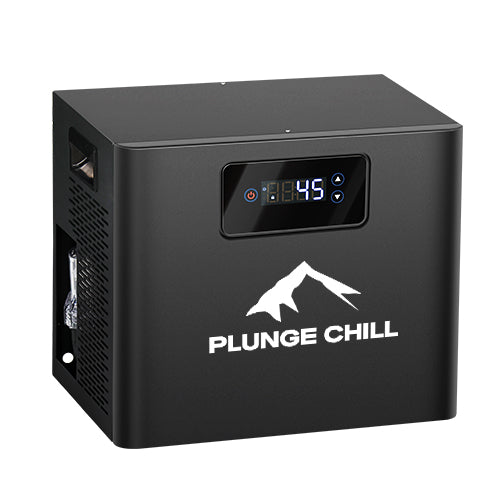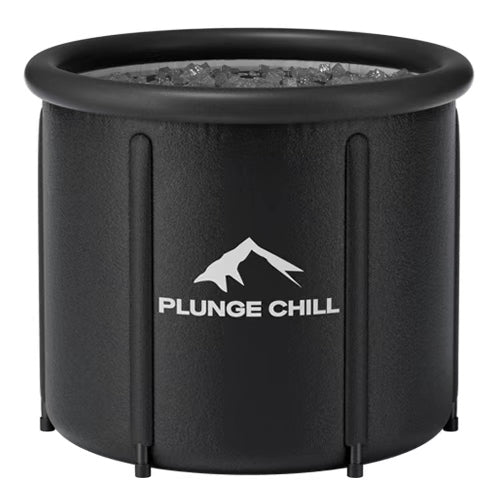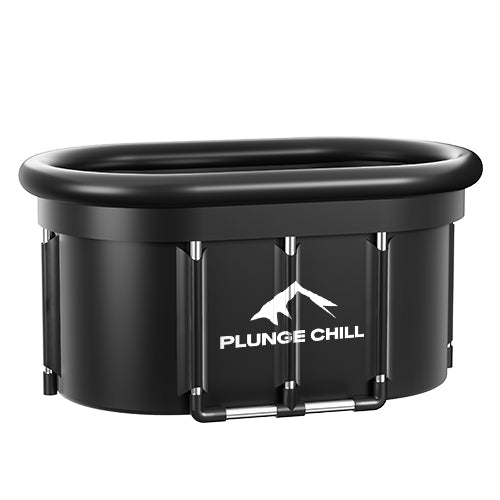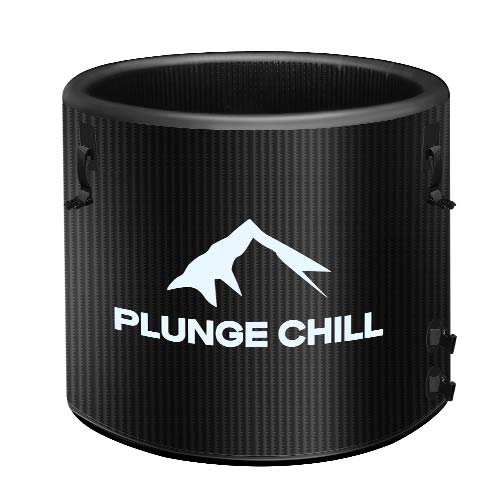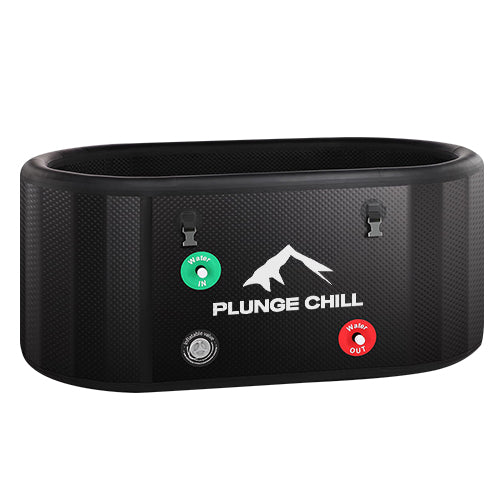As a sports rehabilitation specialist and strength coach who reviews cold plunge products and oversees daily recovery protocols, I’ve learned that the biggest performance unlock isn’t only how cold you go, but how clean you keep the water. Purified water protects skin and mucosal health, preserves equipment, and makes the practice consistent enough to build real adaptation. This guide lays out an evidence‑based approach to filtration, sanitation, chemistry, and workflow so your cold plunge delivers the recovery effect you want without the biofilm, odors, or premature pump failures you don’t.
Why Water Purity Matters in Cold Plunge Recovery
Clean water reduces the risk of skin irritation and ear, sinus, or minor wound infections that can derail training. Clinical sources emphasize that cold plunging carries unique physiological stressors; minimizing preventable risks is part of smart practice. University of Utah Health highlights cold‑shock hazards and the importance of safe setups and gradual exposure, and Cleveland Clinic underscores contraindications for people with cardiovascular disease, peripheral neuropathy, or poor circulation. Purity does not change the cold stress, but it meaningfully reduces secondary issues and makes the routine repeatable.
What “Purified” Really Means for Cold Plunge
In a cold plunge context, “purified” is practical rather than absolute. It means the water remains clear, sanitized, and chemically balanced between drain‑and‑refill cycles so the tub is safe, odor‑free, and gentle on materials. Five pillars determine whether your water stays in that zone: mechanical filtration that removes fine debris; an effective sanitizer that leaves a measured residual or a proven secondary disinfection system; continuous or scheduled circulation that avoids dead zones; physical exclusion with a well‑fitting cover; and clean inputs and habits, from filtered source water to pre‑entry showers. Alphasauna recommends showering before entry, drying off, and covering the bath between uses to cut contamination, and that simple hygiene step is one of the highest‑leverage moves you can make.
Water Chemistry Fundamentals
Cold water changes the math. It slows bacterial growth, which helps, but it also slows chemical reactions, which reduces sanitizer efficacy. Pool professionals account for this with tighter control of the basics and by evaluating the overall balance through the Langelier Saturation Index, a measure of scaling or corrosive potential. In my installs, maintaining the ranges below keeps sanitizer effectiveness high while protecting finishes, heaters, and pumps.
Parameter |
Target Range |
Why It Matters |
Sources |
pH |
7.2–7.8 |
Maximizes sanitizer efficacy; low pH corrodes metals, high pH promotes scale |
CPOClass, Icebound Essentials, ReGen |
Total Alkalinity |
80–120 ppm |
Buffers pH swings for stable chemistry |
CPOClass, ReGen |
Calcium Hardness |
150–250 ppm for acrylic shells; some pool pros use 200–400 ppm |
Too low leaches calcium from metals; too high scales heat exchangers |
Icebound Essentials, ReGen, CPOClass |
Free Chlorine (if used) |
1.0–3.0 ppm |
Residual disinfectant that keeps working between doses |
CPOClass, Cleveland Clinic (general sanitation context) |
Bromine (if used) |
3.0–5.0 ppm |
Effective in cooler water with less odor than chlorine |
Icebound Essentials, Chilly GOAT Tubs |
Hydrogen Peroxide with Ozone |
30–50 ppm in residential setups with reliable ozone |
Non‑halogen sanitizer that breaks down to water and oxygen; relies on strong oxidation support |
Icebound Essentials |
One overlooked nuance is calcium targets. General pool guidance often favors 200–400 ppm for durability, but acrylic‑lined cold plunges with tight heat‑exchange tolerances may thrive nearer to 150–250 ppm. Differences in shell material, heater design, and source water hardness drive the spread. Verification: track LSI monthly and inspect for scale or corrosion at unions and heater cores.

Sanitization and Disinfection Options
You have three broad approaches: halogen residuals (chlorine or bromine), hydrogen peroxide paired with robust oxidation, and secondary disinfection technologies like UV or ozone that complement filtration.
Method |
Typical Residual or Setting |
Strengths |
Limitations |
Best For |
Sources |
Chlorine (dichlor, liquid) |
1–3 ppm free chlorine |
Widely understood, strong residual |
Odor potential; less stable in very cold water; can irritate skin if overdosed |
Shared tubs without ozone/UV |
CPOClass, Cleveland Clinic (general sanitation context) |
Bromine |
3–5 ppm |
Performs well in cool water; less odor |
Reagent cost; still requires testing and balance |
Residential and boutique setups |
Icebound Essentials, Chilly GOAT Tubs |
Hydrogen Peroxide + Ozone |
30–50 ppm H₂O₂ with reliable ozone runtime |
Minimal odor; breaks down cleanly; excellent for sensitive skin |
Requires working ozone injection; weak residual alone |
Low‑to‑moderate bather loads with ozone‑equipped chillers |
Icebound Essentials |
UV (secondary) |
Lamp sized to flow rate |
Inactivates microbes without chemicals |
No residual; lamp maintenance and quartz cleaning required |
As a complement to chlorine/bromine |
CPOClass, Chilly GOAT Tubs |
Ozone (secondary or primary support) |
Manufacturer cycles |
Powerful oxidation; reduces chemical demand |
Material compatibility varies; needs ventilation and correct dosing |
Systems designed for ozone |
Icebound Essentials, Chilly GOAT Tubs |
In practice, manufacturers sometimes disagree on ozone. Icebound Essentials favors integrated ozone to reduce chemical demand and reports strong sanitation when peroxide is kept in range. Chilly GOAT Tubs cautions that ozone can raise water corrosivity and strain components in small volumes with short plumbing runs. The likely cause of this discrepancy is system design: injector type, contact time, materials, and duty cycle all determine whether ozone is an asset or a liability. If your tub is not explicitly designed for ozone, confirm compatibility with the brand’s water‑care guide and inspect gaskets and fittings after the first month of operation. Verification: check manufacturer guidance and surface oxidation‑reduction potential targets; confirm there is no persistent ozone odor with the cover off in a ventilated space.
Filtration and Circulation: The Mechanical Backbone
Clean water begins with flow. A properly sized cartridge or multi‑stage filter paired with steady circulation prevents debris accumulation and ensures sanitizer reaches every corner of the tub. Icebound Essentials recommends running circulation and filtration for at least four hours daily, which aligns with what I’ve seen in 100–150 gallon systems that are used by one to four people per day. CPOClass advises designing pools for full turnover every 30–60 minutes, a high bar that is appropriate for commercial volumes but not required for a small plunge if your filter captures fine particles and you avoid dead zones. Signs of insufficient circulation include persistent haze even with correct chemistry, pockets of settled grit, and noticeable temperature gradients. Corrective actions include a slightly longer daily runtime, nozzle adjustments to improve cross‑flow, and timely filter maintenance.
Task |
Baseline Cadence |
Notes to Adapt |
Circulation/filtration runtime |
About 4 hours per day |
Increase during high use or outdoor setups; aim for visible movement across the entire waterline |
Filter rinse |
Every 2–3 weeks |
Hose‑rinse pleats thoroughly; rotate a second clean cartridge to minimize downtime |
Deep filter clean |
Monthly or when flow declines |
Use a filter cleaner soak; rinse until clear water runs; replace when media deforms or sheds fibers |
Surface/Waterline wipe |
As needed based on scum ring |
Non‑abrasive cleaner; pre‑entry showers greatly reduce buildup |
Cover use |
After every session |
Limits debris and UV degradation; reduces sanitizer demand |

Source Water, Hardness, and Pump Protection
Starting water quality dictates how hard your chemistry must work. Plunge Support warns that high calcium in well water can damage pumps over time. If you fill from a well, pre‑filter the water and soften or blend to bring hardness into range before running the chiller. Keeping calcium within target and pH buffered not only reduces scale in heat exchangers but also prevents seals from wearing prematurely. This is one of the most common root causes I see in service calls when clients move tubs to properties with different water profiles.

A Practical Cleaning Workflow
A low‑friction routine beats a perfect routine you never keep. Begin with what enters the tub. Showering before immersion, avoiding oils, and drying off reduces organic load dramatically; Alphasauna and Chilly GOAT Tubs both emphasize pre‑entry hygiene. Keep the cover on whenever you are not using the tub to block dust and insects. During the week, visually check clarity and odor and wipe the waterline if you notice residue. Rinse the cartridge on a predictable schedule and rotate a clean spare to keep circulation strong. Test pH, alkalinity, and sanitizer levels on a recurring cadence and adjust in a deliberate sequence: buffer total alkalinity first, set pH second, then address calcium hardness, and dose your sanitizer last. In cold water, chemicals dissolve and react more slowly, so allow twenty to thirty minutes of circulation between adjustments and resist the urge to stack repeat doses.
How Often Should You Change the Water?
This is the maintenance topic with the widest spread in public guidance, and context matters. Alphasauna suggests changing water after each use for multi‑user setups or at least daily, and every two to three uses for infrequent individual use, which is appropriate when there is no active sanitation or filtration loop. Icebound Essentials demonstrates that with effective filtration, sanitation, and routine care, many residential owners can run clear and safe water for three to four weeks before a drain and refill. Chilly GOAT Tubs notes that tubs with continuous circulation, UV, and balanced halogen levels can stretch as far as three to four months between refills, notably in larger, well‑sealed systems. Expect your interval to compress with outdoor placement, high bather load, and lapses in pre‑entry hygiene, and to extend with robust circulation and secondary disinfection. Verification: log weekly sanitizer demand, odor, clarity, and total dissolved solids; if demand spikes or odor persists after shock and filtration, drain and refill.

Materials and Build Considerations
Alphasauna points to stainless steel tubs as easier to clean because smooth surfaces resist grime and rinse quickly. In my testing, stainless interiors also feel subjectively colder at equal water temperatures, likely due to higher thermal conductivity at the skin interface. Verification: hold water temperature constant across two tubs and record skin temperature with a contact thermistor for the first minute of immersion. Acrylic and composite shells, by contrast, can be gentler against the skin and allow more aggressive calcium targets without visible etching when chemistry swings, provided you avoid abrasive cleaners.
Ice vs. Chiller: Control and Cleanliness
DIY ice baths are inexpensive and can be useful for rare sessions, but they are difficult to keep at a steady temperature and rely entirely on manual draining and refilling to manage cleanliness. RHTubs characterizes the advantage of dedicated plunge tubs well: integrated chillers hold a precise set point and include filtration, and many add UV or ozone to reduce chemical demand. If you do use bagged ice, Alphasauna recommends choosing clean suppliers and, ideally, making ice from filtered or purified water to avoid seeding the tub with contaminants.

Buying Guide: Choosing a “Purified” Cold Plunge System
Look for an accessible, oversized filter that is easy to remove, a chiller with documented serviceability, and a cover that seals well. Systems designed for ozone or UV that clearly specify flow rates, lamp replacement intervals, and injector types simplify water care and make drain‑and‑refill cycles less frequent. If you are on well water, confirm the manufacturer’s hardness tolerance or use a pre‑filter and softening plan. Reliable drains, debris‑resistant skimmer fittings, low noise at the target flow rate, and straightforward chemical guidance in the owner’s manual are more than nice‑to‑haves; they determine whether you stay consistent. Brands that publish water‑care targets and troubleshooting checklists make ownership easier than those that do not.
Safety, Dosing, and Training Context
The cold itself needs guardrails. Cleveland Clinic advises starting at more moderate temperatures and short durations, ramping up slowly as you adapt. For beginners, water in the 50–59°F range and very brief immersions are sensible; avoid going below about 40°F, and always exit if you lose breath control or feel numbness or dizziness. Harvard Health notes that while cold exposure may transiently improve stress and sleep, evidence remains mixed, and some data suggest immediate post‑strength cold immersion can blunt strength and hypertrophy gains. If muscle growth is a core goal, delay cold exposure by a couple of hours after heavy lifting and reserve immediate plunges for heat management or recovery days. Above all, do not use cold water to mask serious pain; evaluate potential injuries rather than plunge through them.
Product‑Side Perspective from the Field
Across dozens of installs, the combination that gives recreational athletes the cleanest water with the least fuss is a cartridge filter sized generously for the tub volume, a dependable chiller with continuous or scheduled flow, a simple halogen residual (either chlorine or bromine in range), and a UV unit that is easy to service and inspect. Hydrogen peroxide paired with a robust ozone system can be excellent for single‑household tubs with conscientious pre‑entry hygiene, but only when the ozone injector and runtime are verified and the user logs peroxide levels weekly. Systems that skip both residuals and secondary disinfection tend to drift toward cloudy water and more frequent drains, especially in warm climates or outdoors.
Quick Reference Tables
Task or Parameter |
Baseline Recommendation |
Practical Rationale |
Circulation runtime |
About 4 hours daily |
Maintains even sanitizer distribution and temperature; prevents dead zones |
Filter care |
Rinse every 2–3 weeks; deep clean monthly |
Restores flow and fine particle capture; extends cartridge life |
Cover use |
After every session |
Reduces debris and sanitizer loss; stabilizes water temperature |
Drain and refill |
Three to four weeks with robust sanitation; shorter with poor hygiene or outdoor debris; longer only with UV/ozone and strong residuals |
Resets dissolved solids and odors; avoids chemistry drifting beyond easy correction |
Pre‑entry hygiene |
Shower and dry off before immersion |
Reduces oils, sweat, and lotions that destabilize chemistry |
Method |
Target Range or Setting |
Notes for Dosing |
Free chlorine |
1.0–3.0 ppm |
Test, dose small amounts, and allow circulation before re‑testing; avoid stacking doses in cold water |
Bromine |
3.0–5.0 ppm |
Stable in cool water; similar small‑dose approach; monitor combined bromamines |
Hydrogen Peroxide |
30–50 ppm with ozone |
Add slowly; circulate 15–20 minutes; test and document weekly; do not exceed recommended amounts |
pH and alkalinity |
pH 7.2–7.8; TA 80–120 ppm |
Adjust TA first, then pH; allow time between additions |
Calcium hardness |
150–250 ppm for acrylic shells |
Blend softened or hard water to target; track LSI across seasons |
Takeaway
Purified cold plunge water is deliberate, not accidental. Choose a system with dependable filtration and circulation, keep a known sanitizer or secondary disinfection online, and hold pH, alkalinity, and hardness in narrow ranges that protect both you and the hardware. Backstop the chemistry with simple habits: shower before you plunge, keep the cover on, rotate clean filters, and drain on a schedule informed by actual demand rather than wishful thinking. When you handle purity this way, the cold becomes a consistent training tool, not a maintenance headache.
FAQ
What water chemistry should I run in a cold plunge?
Maintain pH between 7.2 and 7.8 and total alkalinity between 80 and 120 ppm to stabilize sanitizer performance. Keep free chlorine at 1–3 ppm or bromine at 3–5 ppm if you use halogens. Hold calcium hardness near 150–250 ppm for acrylic shells to avoid scale and corrosion. These ranges reflect pool‑pro guidance adapted for cold volumes from CPOClass, Icebound Essentials, and ReGen.
Can I use hydrogen peroxide instead of chlorine or bromine?
Hydrogen peroxide at 30–50 ppm can work well in ozone‑equipped residential tubs with good hygiene because ozone provides strong oxidation while peroxide offers a gentle residual. It is not ideal as a solo sanitizer in multi‑user or high‑load scenarios. Verification: use weekly microbial dip slides or ATP testing to confirm sanitation in real use.
How often should I change the water if it looks clear?
If you are running robust filtration and a reliable sanitizer, many residential tubs remain clean for several weeks. With UV or ozone plus halogen residuals and excellent hygiene, some systems stretch longer. That said, outdoor debris, high bather load, and poor pre‑entry routines shorten intervals dramatically. Log odor, clarity, and sanitizer demand weekly and drain when demand rises or odor persists after shock and filtration.
I’m on well water. Will it damage my cold plunge?
It can if hardness and metals are high. Plunge Support advises reducing calcium before filling; excessive hardness scales heaters and stresses pumps. Pre‑filter the fill water, blend with softened water if needed, and confirm hardness is in range before you power on the chiller.
Do stainless steel tubs stay cleaner than acrylic?
Stainless interiors generally wipe clean faster because of smoother surfaces, and some users perceive a stronger cold sensation at equal water temperatures due to higher thermal conductivity. Verification: compare skin temperature drop over the first minute with a contact thermistor in both materials at the same water temperature.
Is ozone safe for small cold plunges?
It depends on design. Icebound Essentials integrates ozone successfully to reduce chemical demand, while Chilly GOAT Tubs cautions against ozone in small systems not engineered for it. Differences likely reflect injector design, contact time, and materials. Confirm compatibility in your brand’s water‑care guide, ensure ventilation, and inspect gaskets and unions during the first month.
References
- https://sncs-prod-external.mayo.edu/hometown-health/speaking-of-health/cold-plunge-after-workouts
- https://health.osu.edu/wellness/exercise-and-nutrition/do-ice-baths-help-workout-recovery
- https://healthcare.utah.edu/healthfeed/2023/03/cold-plunging-and-impact-your-health
- https://health.clevelandclinic.org/what-to-know-about-cold-plunges
- https://www.mayoclinichealthsystem.org/hometown-health/speaking-of-health/cold-plunge-after-workouts
- https://alphasauna.com/how-to-ensure-ice-bath-water-quality/
- https://biohackersupply.com/pages/cold-plunge-temperature?srsltid=AfmBOopBYiu2DRCP2yTfPTQxDCgpjo9BMkECwfWrj-QVwQb5BXksXQfU
- https://www.calderaspas.com/wellness-blog/how-to-cold-plunge-a-beginners-guide-to-building-a-cold-therapy-routine
- https://www.coldtub.com/post/cold-plunge-therapy-temperature-and-duration-for-maximum-benefits
- https://cpoclass.com/cold-plunge-pool-maintenance/
